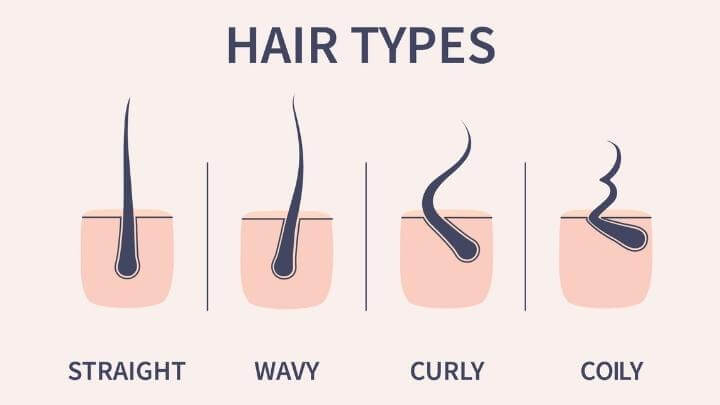The Different Types of Hair

Hair comes in various shapes, sizes, and colors. The type of hair you have depends on various factors such as genetics, ethnicity, and age. Understanding the different types of hair can help you take better care of it and style it accordingly. In this article, we will explore the different types of hair and their characteristics.
Straight Hair
Straight hair is the most common hair type and is characterized by its sleek, smooth texture. The hair strands are usually long and flow straight down the scalp without any visible curls or waves. This hair type is usually easy to manage and can hold hairstyles for long periods. However, straight hair tends to become oily quickly, making it essential to wash it frequently. Straight hair also tends to be less voluminous and less resilient to damage than wavy or curly hair. Because of its smooth texture, it is not as well-protected against environmental factors and can become dry and brittle if not properly moisturized. As such, it is important to use protective products when styling and caring for straight hair.
Wavy Hair
Wavy hair is a combination of straight and curly hair, and it is characterized by its S-shaped waves that flow down from the scalp. This hair type has natural volume, bounce, and movement that makes it easy to style. However, wavy hair can also be frizzy and challenging to manage, especially in humid weather. To maintain wavy hair, it is important to use the right products and styling tools. Styling products, such as mousse and leave-in conditioner, can help to keep hair hydrated and frizz-free. Additionally, it is important to use the right tools such as a diffuser when drying the hair to add volume and reduce frizz.
Curly Hair
Curly hair is characterized by its defined ringlets, curls, or spirals that flow down from the scalp. This hair type has a lot of natural volume and bounce, but it can also be dry and prone to tangles. Curly hair requires a lot of moisture to stay healthy and manageable. To keep curly hair healthy and manageable, use a moisturizing shampoo and conditioner and avoid harsh chemicals. Additionally, regular trims can help keep split ends and breakage at bay.
Coily Hair
Coily hair, also known as kinky hair, is tightly coiled and has a zigzag pattern that can be difficult to manage. This hair type is often fragile and prone to breakage, which makes it essential to be gentle while styling and detangling. Coily hair requires a lot of moisture to prevent dryness and to maintain its natural curl pattern. It's important to use products specifically formulated for coily hair, as they provide the necessary nutrients and hydration. Additionally, protective styles are a great way to prevent damage and give your hair a break from daily styling.
Thick Hair
Thick hair is characterized by its large volume of hair strands, which can make it look dense and full. This hair type is usually strong and resistant to breakage, making it ideal for long-term hairstyles. However, thick hair can be challenging to manage and style, especially when it comes to blow-drying and heat styling. It’s best to use products specifically designed for thick hair that can help control frizz and keep hair moisturized. Additionally, using lower heat settings and a wide-tooth comb can help to prevent breakage when styling.
Fine Hair
Fine hair is characterized by its small volume of hair strands, which can make it look thin and flat. This hair type is usually fragile and prone to breakage, making it essential to be gentle while styling and detangling. Fine hair requires a lot of volume-boosting products to add texture and bounce. Using a volumizing shampoo and conditioner can help add body to the hair. Additionally, using a lightweight styling product like a mousse or a hairspray can help give fine hair more texture and volume. Finally, using a wide-tooth comb or a brush designed for fine hair can help detangle without causing breakage..
Understanding the different types of hair is essential for proper hair care and styling. Each hair type has unique characteristics, and it's essential to tailor your hair care routine to your specific hair type to keep it healthy and manageable. By understanding your hair type, you can choose the right products, styles, and treatments that work best for you.



Leave a Reply